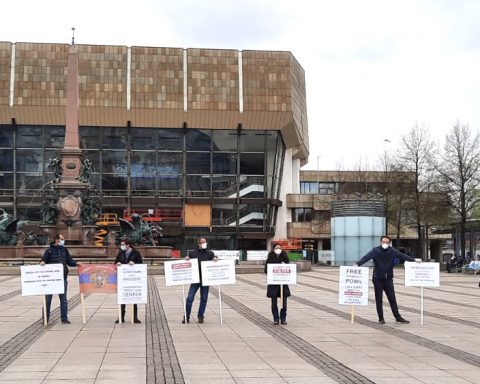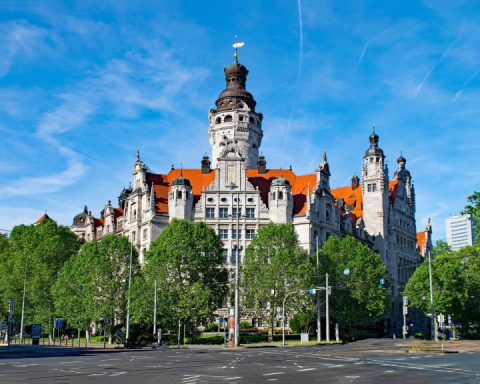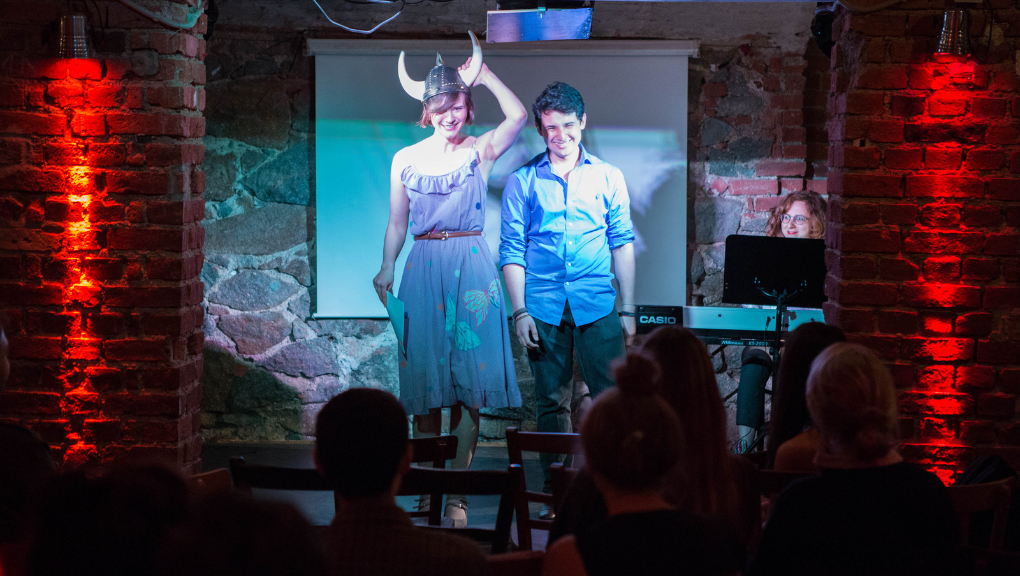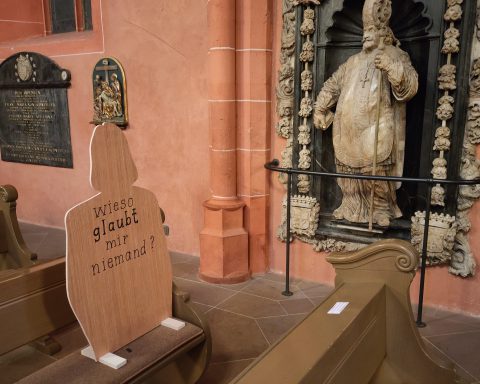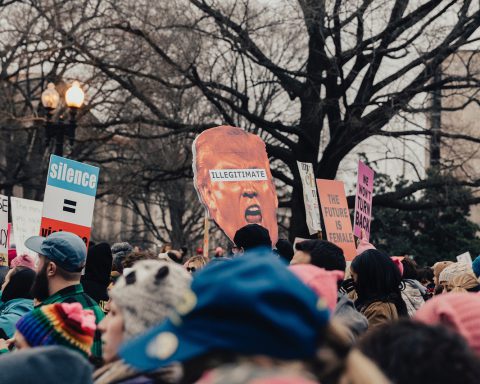On the 8th of May, I saw history unfold via live stream: Armenia completed its own Velvet Revolution.
What are the words one uses to describe something that they thought would never happen? Something that just weeks ago would have been laughed at as unrealistic?
That’s what the Armenian people are currently struggling with: How do you describe the impossible dream of a successful, bloodless revolution driven by the people?
Yet, on the 8th of May, a man who had once been in hiding from the government’s security forces became the Prime Minister, and unquestionably the most powerful man in the country.
Who is Nikol Pashinyan, the leader of Armenia’s Velvet Revolution? And how did he become the voice of the people?
Armenia is a small, landlocked post-Soviet state in the Caucasus, with a population of just under 3 million. It’s no powerhouse.
With no ocean seaports, Armenia has struggled to connect with the international community. And it has struggled to present itself as the friendly, welcoming place it is, due to the frozen conflict with neighboring Azerbaijan.
Notably, unlike other post-Soviet states such as Ukraine and Georgia, Armenia had never had a color revolution. The color revolutions were (largely) peaceful revolutions in post-Soviet states that threw out the authoritarians who had been there since Soviet times, replacing them with popular politicians. In contrast, Armenia’s economy and politics have been dominated by oligarchs.
Armenia may almost have had a color revolution. In 2008, the outgoing president’s hand-picked successor, Serzh Sargsyan, won the election – but with significant evidence of electoral fraud, as has been the case in other countries. The people were outraged. 100,000 people went onto the streets to protest.
These protests lasted for 11 days, until March 1st, when the authoritarians decided to crack down. Special forces opened fire on the crowds, killing eight people. A state of emergency was declared. Police arrested opposition figures en masse, including the opposing presidential candidate. Nikol Pashinyan went into hiding for 16 months.
This brought about the age of fatalism.
I came to Armenia in 2012, four years after the attack and well into Serzh Sargsyan’s first term as president. My interests are rights and politics, so naturally I wanted to learn, and talk about, Armenia’s politics.
Yet, time after time, people would tell me that it was pointless to care about politics. They’d ask me why I bothered to come to Armenia, and that I should go back to America where there were opportunities.
I won’t forget the time I was chatting with an attractive woman at a bar (before I met my wife). and tried to fill a lull in the conversation by mentioning some minor political piece of news. She didn’t get bored but instead got angry, yelled “Politics is pointless. Who cares about it!?”, and turned away.
With this context, it wasn’t much of a surprise when Serzh Sargsyan made it clear that he wasn’t going to give up power, even when he completed his second term as president.
Armenia’s constitution had a two-term limit. However, in 2015, Serzh Sargsyan’s party pushed for a constitutional referendum that changed the country from a presidential system to a parliamentary one.
This opened the door for Serzh to transition from president to prime minster, without ever giving up power. You could say that Serzh was following in Putin’s footsteps.

While discontent was large, ordinary people did not make any major attempts to organize against the government.
The people had become desensitized to politicians grabbing more power, and were largely going to let this go by. An important exception was Nikol Pashinyan, as well as others who decided to push back.
The cities outside of Yerevan’s metropolitan area were more willing to express their discontent.
They’ve seen the wealth pour into Yerevan, which is economically dominated by oligarchs, while their cities fight for crumbs. That’s part of the reason why Nikol started a protest march from Gyumri, 190 km from Yerevan. He walked the entire way, visiting towns and villages all along to recruit more and more followers.
Sporting a beard and an iconic camouflage T-shirt, he came off as an everyman fighting back against the elites. A David challenging Goliath.
Before Nikol even made it to Yerevan, word had already spread to the populace, and the youth listened. The youth of Armenia are the free generation. They are the first generation born after the collapse of the Soviet Union. They’ve never experienced an external power repressing them and the self-censorship that causes. They were the first on the streets of Yerevan starting on the 13th of April.
While many people initially dismissed them, by the end, everyone – young and old, the frail, mothers with children, and even government sycophants – were protesting in the streets.
Let me take a step back here and emphasize how much this movement was driven by domestic concerns. The stagnant economy, oligarchs who could get away with murder, and the brazenness of Serzh Sargsyan, are what led to these protests.
In terms of geopolitical concerns, Armenians are mostly of one mind. And that’s why Moscow tolerated these protests. Both Nikol and Serzh echo the fact that Armenia’s security depends on good relations with Russia. Whoever is in power will not damage relations with Russia.

Thus, Moscow saw no reason to intervene as it had in Georgia in 2008 or Ukraine in 2014.
With Nikol in Yerevan, daily protests erupted in the capital city. Each day, the protests became bigger and bigger. Normal citizens blocked roads with their cars. They brought downtown Yerevan to a standstill. The authoritarians had expected the protests to fizzle out, but the people proved them wrong.
On the 17th April, Serzh Sargsyan was officially voted in as prime minister. On the same day, Nikol announced the start of the Velvet Revolution.
The darkest day of the protests came on April 22nd.
Serzh Sargsyan agreed to meet with Nikol Pashinyan – not in private as Serzh preferred, but in front of cameras. Keep in mind that the specter of the killings of March 1st, 2008 hung over every day of the protests. The special forces had already been active on the street, though thankfully unarmed.
To say the meeting didn’t go well is an understatement. Lasting all of three and a half minutes, it involved the two men interrupting each other and agreeing to nothing. However, what sent a chill down everyone’s spine is what Serzh told Nikol: “You have not learned the lessons of March 1th.”

Shortly afterwards, Nikol was snatched off the street by security forces and held incommunicado. Everyone feared what would come next. Would the dream be crushed? Would the young suffer the same sense of betrayal and fatalism that the previous generation had suffered? How many would die this time?
However, none of those things happened, and April 23rd turned out to be a day of revelry rather than tragedy. On that day, not only was Nikol released unharmed, but Serzh Sargsyan decided he was done. He resigned. In his official resignation letter, he even acknowledged that he had been wrong.
After 11 days of protest, the untouchable strongman was gone. Goliath had fallen.
Throughout the entire country, people ran into the streets and celebrated. Champagne flowed, people lit barbecues, and there was dancing everywhere. The Velvet Revolution was no longer just a rallying cry; it was real.
But while Serzh Sargsyan was gone, his party wasn’t, and they still held a majority of seats in parliament. The question became whether they would try to replace Serzh Sargsyan with someone similar.
But Nikol continued his protests, demanding that parliament elect the “people’s choice.” On May 1st, during the next parliamentary vote for prime minster – where Nikol Pashinyan was the only candidate – the majority party refused to vote for Nikol.
Nikol quickly went back to protesting, where he was joined by thousands of people. The next day saw a general strike, which shut down the capital city. Amusingly, parliamentarians had to drive upstairs to get by the streets filled with protesters.
The majority party had no other option, and on the 8th of May, enough members of the party voted for Nikol to make him prime minister. The Velvet Revolution ended without a shot fired, and the people winning everything they wanted.
Everyone recognizes that replacing prime minsters won’t fix all the social and political problems that Armenia faces. But this revolution has given the people something they haven’t had in 10 years: hope. In the words of Nikol Pashinyan, “If we were able to do the impossible, that means we will be able to do the difficult.”

